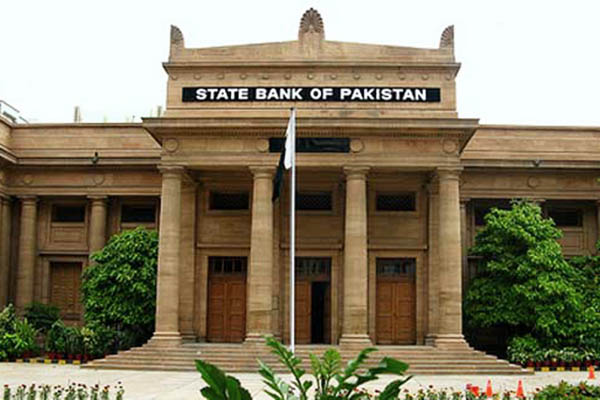
No Credit
The State Bank of Pakistan (SBP) on Monday maintained its policy rate at 15 percent for the next two months, saying this will help cool the “overheating economy” and curtail the current account deficit.
“With recent inflation developments in line with expectations, domestic demand beginning to moderate and the external position showing some improvement, the MPC [Monetary Policy Committee] felt that it was prudent to take a pause at this stage,” it said in a statement issued after a meeting of the Monetary Policy Committee. “Looking ahead, the MPC intends to remain data-dependent, paying close attention to month-on-month inflation, inflation expectations, developments on the fiscal and external fronts, as well as global commodity prices and interest rate decisions by major central banks,” it added.
The SBP noted that, since the last meeting of the MPC, headline inflation had risen to 24.9 percent in July, with core inflation also soaring. “This was expected given the necessary reversal of the energy subsidy package—effects of which will continue to manifest in inflation out-turns throughout the rest of the fiscal year—as well as momentum in the prices of essential food items and exchange rate weakness last month,” it said, adding that the sharp reduction in the trade balance in July and a reversal of the rupee’s slide against the U.S. dollar reflected improved fundamentals and sentiment.
“Third, the Board meeting on the ongoing review under the IMF program will take place on Aug. 29 and is expected to release a further tranche of $1.2 billion, as well as catalyzing financing from multilateral and bilateral lenders,” it said, confirming that Islamabad had also secured an additional $4 billion from friendly countries. “As a result, FX reserves will be further augmented through the course of the year, helping to reduce external vulnerability,” it said.
Referring to global developments, the central bank said slowdown in global growth would not be as harmful to Pakistan as for most other emerging economies due to the relatively small share of exports and foreign private inflows in the economy. “As a result, both inflation and the current account deficit should fall as global commodity prices ease, while growth would not be as badly affected,” it added.
The SBP said that, “as expected,” inflation intensified in July, rising to 24.9 percent year-on-year, with food and energy being the primary drivers. “In coming months, curbing food inflation through supply-side measures that boost output and resolve supply-chain bottlenecks should be a high priority,” it said, noting that headline inflation was expected to peak in the first quarter before declining gradually through the rest of the fiscal year. “Thereafter, it is expected to decline sharply and fall to the 5-7 percent target range by the end of FY24, supported by the lagged effects of tight monetary and fiscal policies, the normalization of global commodity prices, and beneficial base effects,” it said, stressing this was subject to uncertainty, with risks arising from the path of global commodity prices, the domestic fiscal policy stance, and the exchange rate.
According to the central bank, economic activity has moderated since the last meeting of the MPC, with demand indicators such as cement sales, POL, fertilizers and automobiles softening and growth in large-scale manufacturing nearly halving in June. “Recent flooding caused by unusually heavy and prolonged monsoon rains creates downside risks for agricultural production, especially cotton and seasonal crops, and could weigh on growth this year,” it warned, adding it expects growth to moderate to 3-4 percent in FY23 on account of the tightening of fiscal and monetary policies. “This will ease demand-side pressures on inflation and the current account, and lay the ground for higher growth in future on a more sustainable basis,” it said, adding that sustained growth over the medium-term urgently required structural reforms that moved Pakistan’s growth model from consumption toward exports and investment.
The trade deficit, per the SBP, halved to $2.7 billion in July; imports fell by 36.6 percent month-to-month and 10.4 percent year-on-year; and exports declined by 22.7 percent month-on-month. While praising the decline in imports through administrative measures, the central bank warned such administrative measures were not sustainable and would need to be eased in the coming months.
The central bank emphasized that the government must take “strong measures” to curtail energy imports, advising early closure of markets; reduced electricity use by residential and commercial customers; and greater encouragement of work-from-home and car pooling. Referring to the country’s troubling foreign exchange reserves, the SBP said the release of the IMF’s tranche and additional assistance from friendly countries would help it rise to around $16 billion in the current fiscal, adding that it was essential to contain the current account deficit to around 3 percent of the GDP to support the rupee.
According to the MPC, the budget for the ongoing fiscal targets a primary surplus for the first time in seven years with an aim at generating significantly higher tax revenue.
